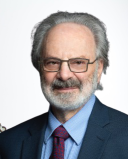Neuroscience
The Joy of Dance
Why our brains can’t help but tap along to a beat.
Posted September 1, 2024 Reviewed by Kaja Perina
Key points
- There is no culture in the world that does not have some form of music, dance, and singing.
- Music stimulates the brain’s reward centers.
- Dance activates the brain's sensory and motor circuits.
- Dance is an expression of ‘collective effervescence’ and serves to unify the group and combats loneliness.

At the recent Olympic games opening ceremony, a troupe of 80 Moulin Rouge dancers performed with verve and vigor the iconic French can-can. The crowd went wild. They loved it. And who wouldn’t?
I wonder why people have since time immemorial taken to dancing. There is no culture in the world that does not have some form of music, dance, and singing. They are inseparable. Music is assumed to have originated concurrently with language, around 150,000 years ago.
There is evidence now that the impulse to dance may have existed already in early primates before they evolved into humans, as demonstrated by Prof. Yuko Hattori, at Kyoto University. Hattori played a repetitive piano note attempting to teach a chimpanzee in her lab to keep a beat. The chimp would try to tap out the rhythm on a small electronic keyboard in hopes of receiving a reward. This went as planned. However, to every one’s surprise, in the next room, another chimpanzee heard the beat and began to sway his body back and forth, almost as if he were dancing. "I was shocked," Hattori says. "I did not expect that without any training or reward, a chimpanzee would spontaneously engage with the sound by dancing".
What is it about music that makes us want to move in response to the beat, and what happens in our brains when we do so? Music stimulates the brain’s reward centers, while dance activates its sensory and motor circuits. Concurrently the limbic system which is involved in emotion processing triggers the release of feel-good hormones, such as endorphin, oxytocin and dopamine, while the cerebellum integrates input from the brain and spinal cord and helps in the planning of fine and complex motor actions.
Mirror neurons also play a role in our enjoyment of dance. As their name implies, mirror neurons are brain cells that are activated when we see other people doing something. We automatically yawn if the person sitting opposite to us yawns. Watching people dance makes us want to join them and dance. When we do so, we are no longer alone but feel part of a group.
According to Prof. Gerlinde A.S. Metz, Department of Neuroscience, University of Lethbridge, who I conferred with recently, brain-derived neurotrophic factor (BDNF) is crucial for the survival and development of neurons, acts as a modulator of neurotransmitters, is vital for learning, memory, movements and dance. It is extensively found in the central nervous system, the gut, and various other tissues. When a person dances especially with others, their body also produces oxytocin, the love hormone, which then heightens the concentrations of BDNF in the circulation producing more of the beneficial effects described above.
Dr. Joe Verghese’s group from the Albert Einstein College of Medicine, N.Y. examined how various leisure activities impact the risk of dementia in older adults. Analyzing the effects of 11 different physical activities, such as cycling, golf, swimming, and tennis they discovered that only dancing reduced significantly the participants' risk of developing dementia. The researchers suggested that the mental effort and social interaction involved in dancing contribute to this protective effect for dementia and enhance brain health.
Research has shown that dance is a suitable form of activity for older adults, as it combines physical movement with cognitive and social engagement and often with hands on contact with another person.
An example of such study is one undertaken by scientists from the University of Leeds. Their “Dance On” project studied 685 participants aged 55 and older in weekly dance classes for one year. By the end of the trial, participants maintained an increase in physical activity over the entire year with many reporting feeling stronger, more confident, and “years younger.” Dr. Sarah Astill, lead investigator said, “We show that dance delivered across a range of diverse communities is a feasible way to get older adults physically active. This is evident even for the ‘oldest old’ at 85+years.”
One of the remarkable things about dancing is the effect it has on people with trauma and dementia. Kayla Connick, is a board-certified music therapist in Pensacola, FL. She spoke to me recently about her use of dance and movement with survivors of trauma and people suffering of dementia. Referring to people living in long-term care settings she remarked, “Many of these people receive no visitors and spend their days withdrawn and silent. But when I come and play music from the 50’s or 60’s, music that was popular when they were young, they light up, start to tap their feet or clap their hands. Some will stand up and begin dancing. Others will even remember the lyrics. For the rest of the day, the participants as well as the staff are happier and more present.
Dancing challenges our senses, enhances neuronal connection, relieves stress, contributes to mental health, help us to socialize and bond with friends and reconnect with our past.
Apart from its health benefits we dance because it brings us the pure joy of being fully alive. Here, now, just whirling with every cell in our bodies.
This article is an abridged version of a post originally published on Aug. 30, 2024, in The Globe and Mail.
References
Frederick, Eva (2019). Dancing chimpanzees may reveal how humans started to boogie. Science, doi:10.1126/
Rizzolatti, G., and Craighero, L. 2004. The mirror-neuron system. Ann. Rev. Neurosci. 27:169–92.
Arabin, B., & Jahn, M. (2013). Need for interventional studies on the impact of music in the perinatal period: results of a pilot study on women’s preferences and review of the literature. The Journal of Maternal-Fetal & Neonatal Medicine, 26(4), 357-362.
4. Durkheim, Émile. The Elementary Forms of the Religious Life, (1912, English translation by Joseph Swain: 1915) The Free Press, 1965: HarperCollins, 1976: new translation by Karen E. Fields, Free Press 1995.
Cohen, Geoffrey L, (2024). Belonging: The Science of Creating Connection and Bridging Divides. WW Norton.
Verghese, J., Lipton, R. B., Kuslansky, G., ... & Buschke, H. (2003). Leisure activities and the risk of dementia in the elderly. New England Journal of Medicine, 348(25), 2508-2516
Britten, L., Pina, I., Nykjaer, C., & Astill, S. (2023). Dance on: a mixed-method study into the feasibility and effectiveness of a dance programme to increase physical activity levels and wellbeing in adults and older adults. BMC geriatrics, 23(1), 48.




